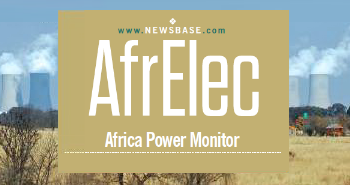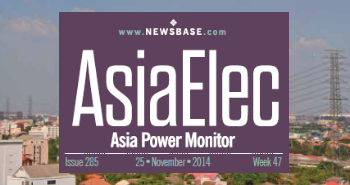REM: Fitch: Wind power pipeline up by almost 33% in six months

The world's wind project pipeline increased significantly between the second and fourth quarters of 2021 as efforts to mitigate climate change continued to drive the adoption of renewables. This is according to a new report by Fitch Solutions, the US credit rating agency.
As much as 55% of that pipeline globally is offshore, much of it in traditional Western markets and throughout Asia, said Fitch.
Offshore wind has the lowest development risks associated with the sector overall, although onshore still remains safer in several markets, the report said.
“Our wind project pipeline registered in our Key Projects Database (KPD) continues to expand with new impetus for growth amid global climate initiatives, such as COP26 [UN Climate conference in Glasgow in November], to support larger wind capacity growth targets,” said Fitch.
This is important because of the rush to transition the energy sector to low- or non-carbon sources. The wind industry is the most mature of the renewable energy sectors, and as such, is a bellwether of the potential of clean energy to grow.
According to the Fitch report, the North America and Western Europe (NAWE) region leads the global pipeline with the highest volume of capacity, at 190 GW across all stages of development.
This highlights the advanced nature of these markets' ambitions to bring on more renewable capacity amid reductions in fossil fuels, it said.
Ranking second in our KPD, Asia also maintains a vast pipeline, says Fitch, although the report does highlight that the actual value may be larger than this, as the nature of some markets in the region, such as China, means many projects are under-reported or are smaller than our KPD data capture thresholds.
This has resulted in the Chinese wind market in particular being under-reported. While the market has a 14-GW project pipeline, including 8 GW in offshore wind projects, Fitch data suggests that China will add 332 GW of wind capacity over the coming decade.
Fitch highlights that globally, offshore wind has edged ahead of onshore wind for the first time, capturing 55% of the known project pipeline against 45%. The value of the offshore sector also outweighs the onshore space with a total known value of $304bn compared with $137bn. However, Fitch stresses that this only reflects the value for 806 projects against its 1,316 in the pipeline. This is also due to the under-reported nature of many smaller onshore project developments.
Fitch also stresses that offshore wind in the NAWE region has seen steady growth, with large markets such as the US’ 28-GW pipeline moving forward with projects entering advanced stages such as post-FID, licensing and construction for the first time.
Fitch’s growth forecast for the US offshore wind power sector also accounts for 11.5 GW of offshore wind capacity set to come online by the end of the decade. Furthermore, increasing support for the sector at the US federal level under the Biden administration leads us to expect that sizeable upward revisions to the forecasts are “likely” over the coming years.
The Biden administration has set a goal of deploying 30 GW of offshore wind in the US by 2030 – a significant ramp-up from the 42 MW of offshore wind capacity currently in operation.
Fitch sees an acceleration of offshore wind projects in new markets in Asia, and to a lesser extent, Central and Eastern Europe (CEE) and Latin America (LATAM). This is being driven by the technology cost decline and maturing of global supply chains and manufacturing.
Markets such as South Korea, Japan, Taiwan and Vietnam are all looking to develop large-scale offshore wind programmes that will account for almost all of their respective wind project pipelines, Fitch notes.
In the case of South Korea, for example, it notes that renewables growth potential will remain largely concentrated in the offshore wind sector, where the market’s large coastal zones offer an alternative to meet the country’s ambitious renewables growth targets. While offshore wind remains an underdeveloped sector in the South Korean renewable energy industry, at present the pipeline is accelerating due to stronger government support under the Green New Deal and rising investor interest.
Furthermore, the South Korean market is looking to develop large-scale floating wind technologies. The government, for example, has approved an electricity business licence for the first phase of a 1.5-GW floating offshore wind project in Ulsan. The project is developed by Total and Macquarie, which have previously signed a co-operation agreement to develop five floating offshore wind projects, with a total combined capacity of 2 GW, on the eastern and southern coasts of the country, the first floating wind licence to be granted, and sets the stage for an emergence of the subsector.
The report outlines that that NAWE represents the lowest risk region for the technology’s deployment, due to the region being comprised of highly stable economies with strong legal frameworks, access to financing and an extensive history of successful development.
Asia comes second, with the offshore wind sector having lower risk profiles than onshore as well. This is due to the large number of onshore wind project cancellations and suspensions in some markets such as India, which has seen significant challenges in realising its wind pipeline. Furthermore, many of the offshore projects hold high status within those markets and considerable nationally significance for their power sector. Fitch also highlights that many of the developers behind the projects in Asia are highly experienced companies such as Ørsted, which has an extensive history of successful developments.
In contrast, the report says that onshore wind does remain the project class that is most likely to succeed in the LATAM and MENA regions. In LATAM, this is due to the sector being more nascent, involvement of experienced entities and minimal project pipeline, with very few markets looking at offshore deployments.




Follow us online